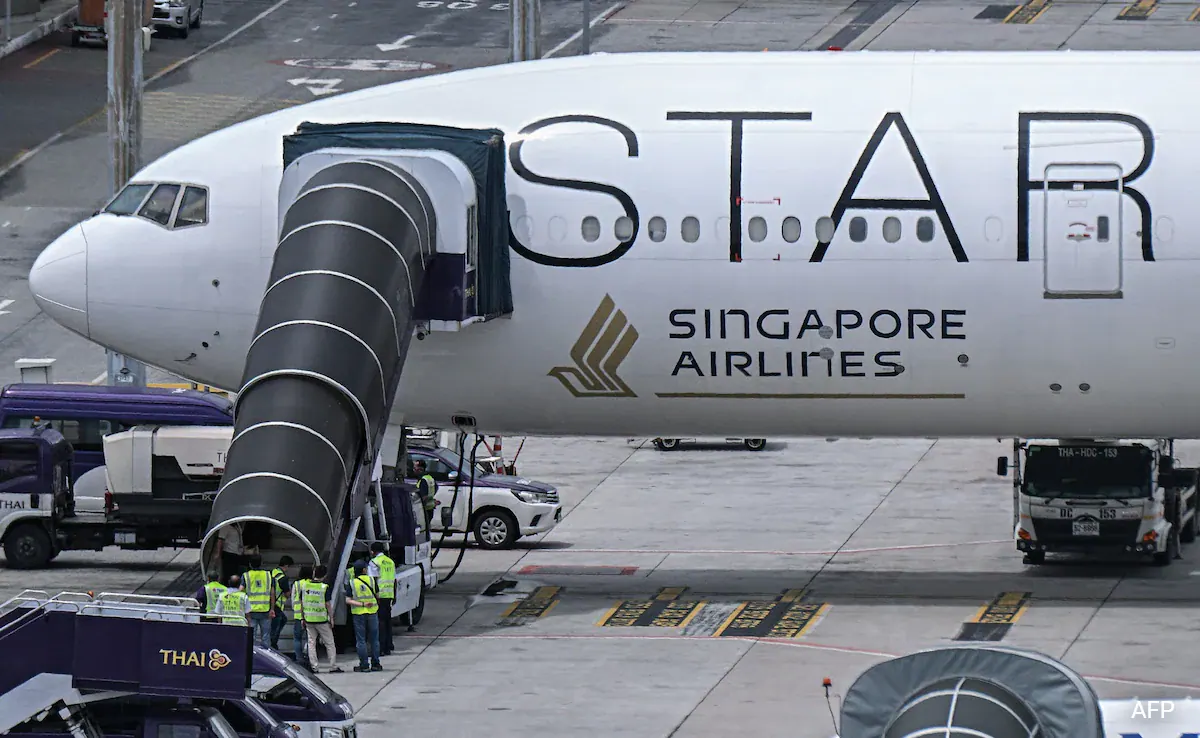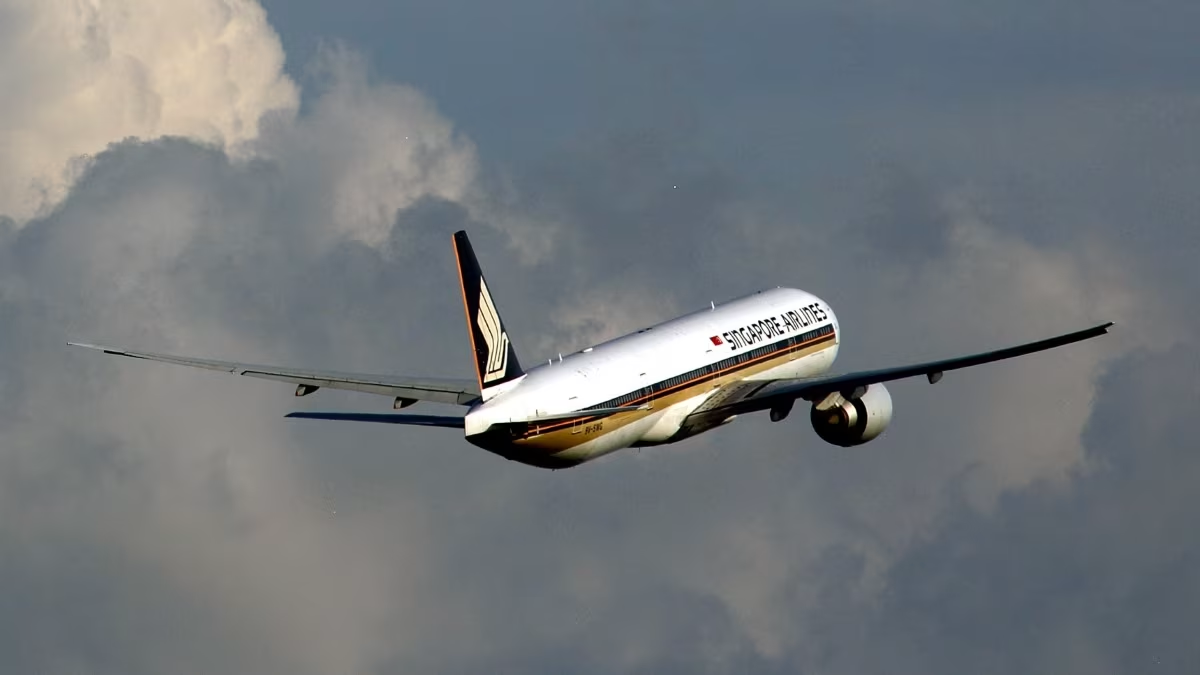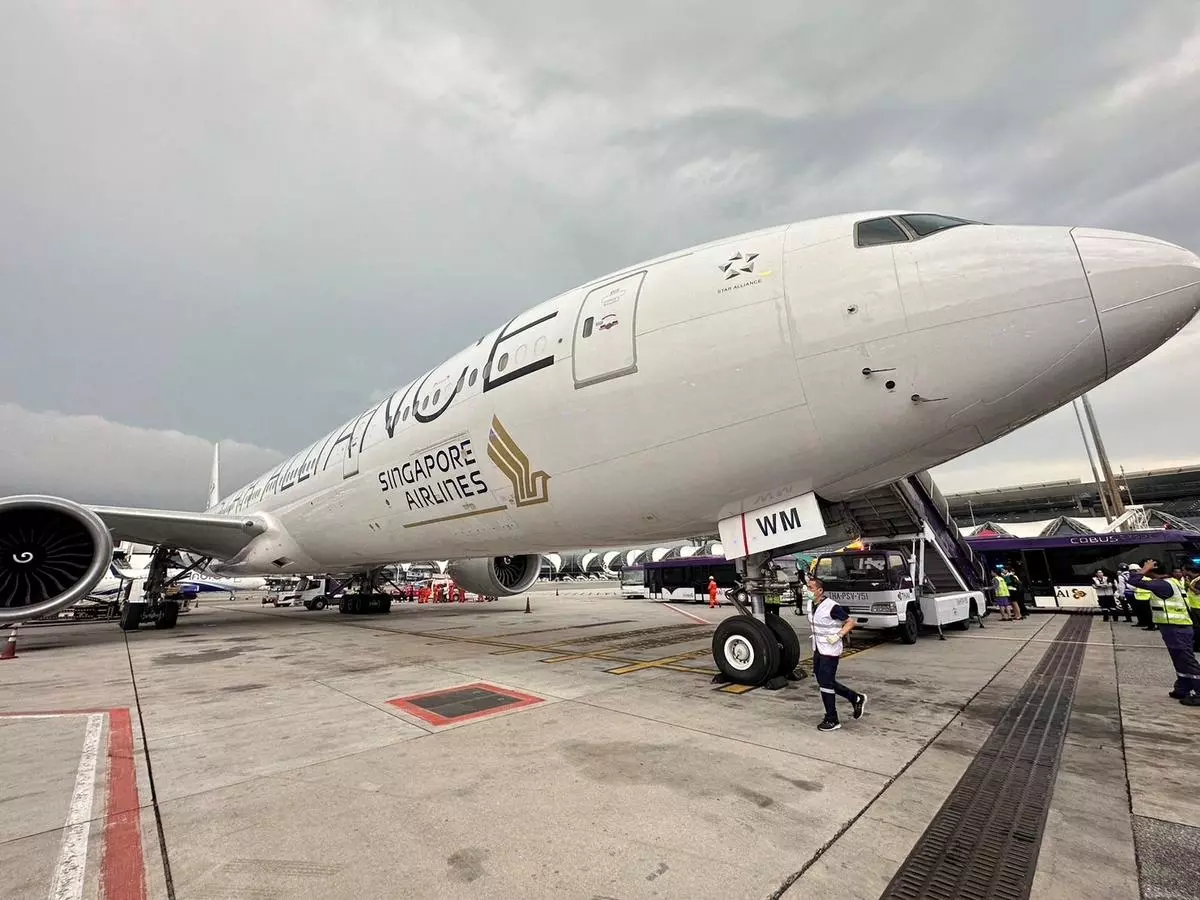Last week, passengers aboard a Singapore Airlines flight experienced a terrifying ordeal that thrust the dangers of air travel into the limelight once again. The flight, a routine journey from London’s Heathrow Airport to Singapore, turned perilous as it passed over Myanmar, revealing the unexpected hazards that can emerge even in modern aviation.

Singapore Airlines: A Sudden Shift in Gravity
According to an initial report from the Singapore Ministry of Transport, the older-model Boeing 777-300 encountered what is now being described as a “deadly turbulence event.” The flight data recorder captured a rapid succession of gravitational changes—from a mere 0.44G to a startling 1.57 G.
This drastic fluctuation in forces caused the aircraft to uncontrollably climb hundreds of feet in a phenomenon known as an “uncommanded” ascent.
“As the plane climbed, it experienced significant turbulence, followed by a sudden and rapid descent to the original flight level of 37,000 feet,” detailed the report. The pilots, grappling with the aircraft’s erratic behavior, were forced to deploy the air brake as the plane sped up during the descent.
The Consequences of Severe Turbulence
The turbulence’s impact was severe, with 104 passengers sustaining injuries and one tragic fatality. The Ministry of Transport highlighted that the transition from +1.35G to a negative -1.5G in less than a second was particularly hazardous. “This likely caused passengers who were not secured with seat belts to become airborne, leading to injuries,” the report noted.

In the aftermath of the incident, the crew alerted the pilots to the injured passengers, prompting an immediate diversion to Suvarnabhumi Airport in Bangkok, Thailand. This quick decision-making helped ensure that those injured received prompt medical attention.
Ongoing Investigation and Safety Measures
The Ministry of Transport has confirmed that its investigation into the Singapore Airlines incident is ongoing. The focus is now on understanding the dynamics that led to such severe turbulence and implementing measures to prevent such occurrences in the future.

As the aviation community and passengers alike wait for the final report, this Singapore incident serves as a stark reminder of the unpredictable nature of air travel. The importance of adhering to safety measures, such as wearing seat belts throughout the flight, has never been more apparent.
This detailed examination of the events that unfolded on that fateful flight over Myanmar not only sheds light on the risks associated with air travel but also underscores the relentless efforts towards enhancing flight safety. As investigations continue, the hope is that this incident will lead to improved safety protocols, ensuring the well-being of passengers and crew in the skies.


